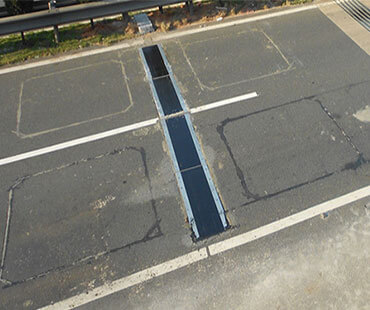Road Weigh In Motion
How do you weigh a truck in motion?
How do you weigh a truck in motion? If this question has crossed your mind, read on to find out how you can get all the answers and more with an impressive, automated system from Senlogic Automation. Weighing vehicles in motion is never easy, but our equipment does most of the hard work for you – so you can collect accurate data and make important decisions about your fleet’s weight management. Our RWM System uses the latest technology to weigh trucks in motion and transmit data from the vehicle to the host computer in real time.
Road Weigh In Motion
While it is not impossible to conduct road weighing for trucks, it isn’t easy. So what exactly is road weighing and how does it help us maintain correct toll rates on India’s highways and byways? When can we implement Road Weigh In Motion (RWIM) system and why? Read on to find out! Road weighing involves placing sensors or load cells at strategic locations along roads that are used by heavy vehicles like trucks and buses to calculate their weight based on their axle load.

This helps determine whether they are using an optimal number of axles under which they should be permitted to run. The Road Transport Department of each state has been tasked with conducting road weighing as part of its mandate towards ensuring safe transportation of goods across states. However, there have been instances where truck drivers have evaded paying correct toll charges because they were overweight or underweight while passing through various toll plazas across state borders. Since it is almost impossible to conduct road weighing for trucks in motion, authorities have started implementing Road Weigh In Motion (RWIM) systems. These systems help authorities accurately measure a vehicle’s weight without having to stop them from moving. RWIM systems use transponders fitted inside vehicles which communicate with readers installed at different points on roads to transmit information about their position and speed as well as other details such as axle configuration etc. Based on these details, readers are able to estimate vehicle weights instantly when they pass through toll plazas thus helping authorities ensure that trucks pay accurate toll charges even if they are running overweight or underweight.
The Road Weigh System
Road Weigh-in-Motion (RWIM) devices are systems used to monitor vehicle weight while travelling. A RWIM system typically consists of an axle scale, a transmitter/receiver unit, and telemetry or communication hardware. The main objective of these systems is to ensure that commercial vehicles comply with all applicable Federal Motor Carrier Safety Administration (FMCSA) and state weight regulations as well as condition requirements. The first use of heavy vehicle road weigh-in-motion began in 1940 when Iowa became one of the first states to enforce laws requiring operators driving on public roads to obtain permits for their cargo and gross vehicle weight prior to operating on any state highway. By 1982, most states had adopted similar policies and legislation. This led to a need for improved enforcement techniques which would allow authorities to verify weights on moving trucks without having to stop them at roadside inspection stations. To address these concerns, several states implemented road weigh-in-motion programs which allowed law enforcement officers to measure truck weights using sensors installed along roadsides. Although initially implemented in California, it was New York State that developed what is now considered by many as one of the most effective road weigh-in-motion programs in operation today. Road Weigh System: Road Weigh-in-Motion (RWIM) devices are systems used to monitor vehicle weight while travelling.
Different Types of Weigh Bridges
Weigh bridges use various methods to determine how much load a vehicle is carrying. The most common method is to place strain gauges on key structural elements of vehicles, such as suspension springs and axles. The vehicle's weight pushes down on these parts; if they compress, that means there's weight being supported by them. A calibrated load cell measures exactly how much compression has occurred, which can be converted into an accurate total weight measurement. This is called dynamic weighing, because it relies on measuring movement rather than stationary scales themselves. Most electronic weigh stations are designed with dynamic weighing in mind and can communicate with your vehicles over radio or cellular signals so that automatic readings can be taken without stopping or slowing down vehicles.




















